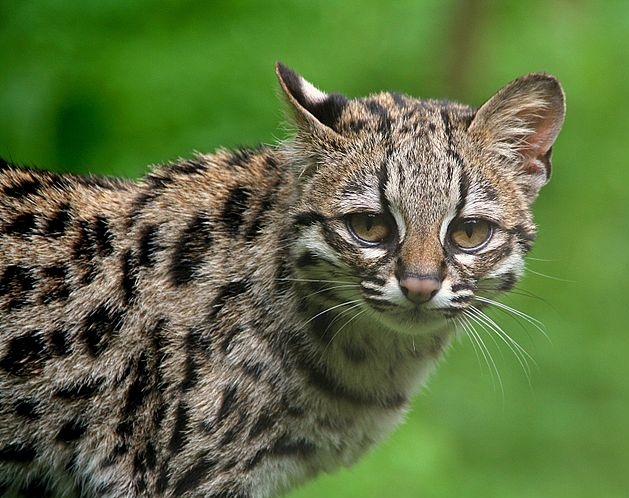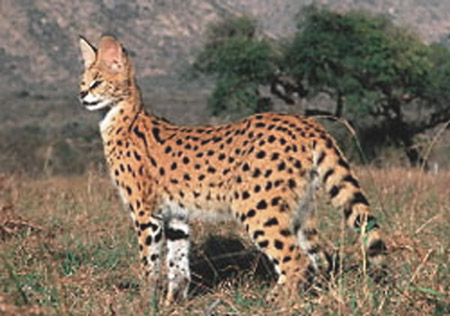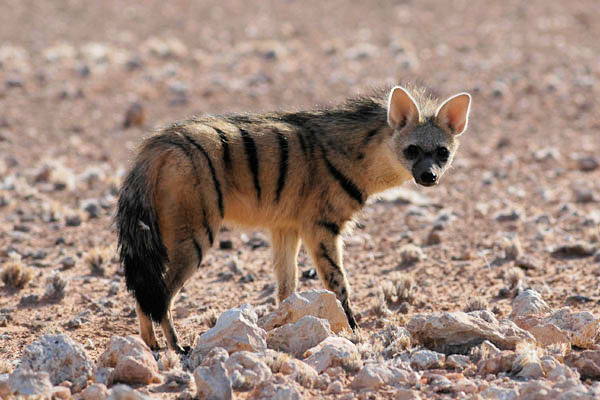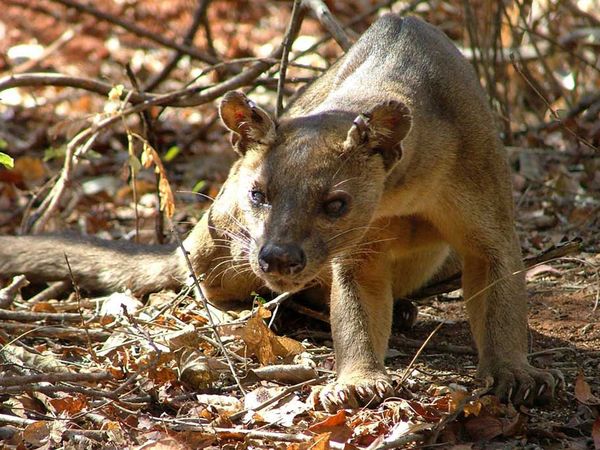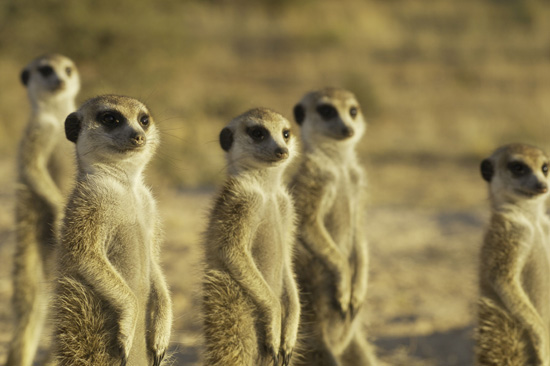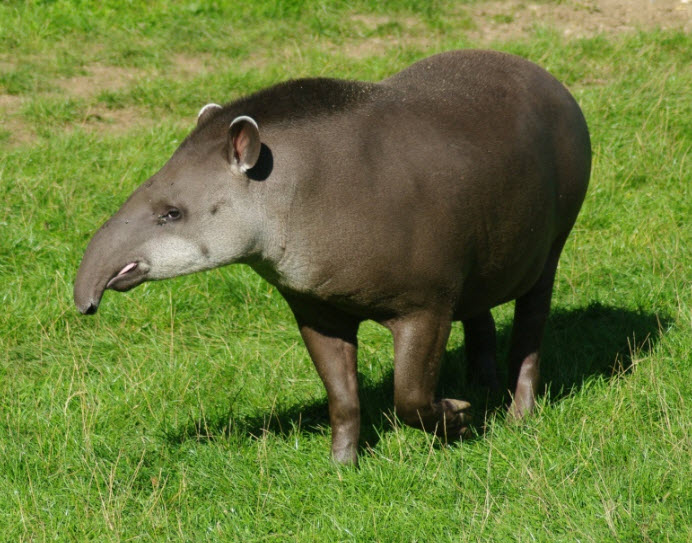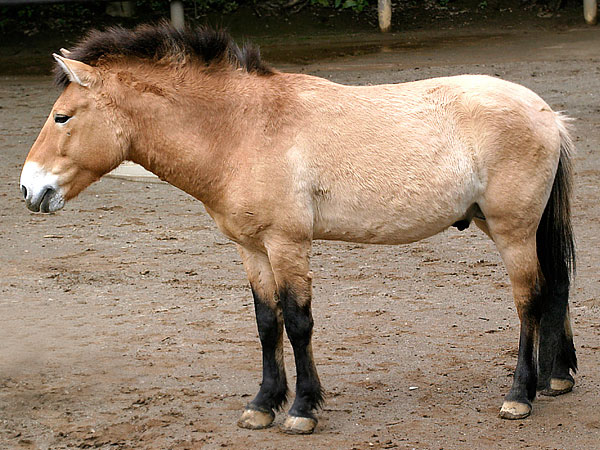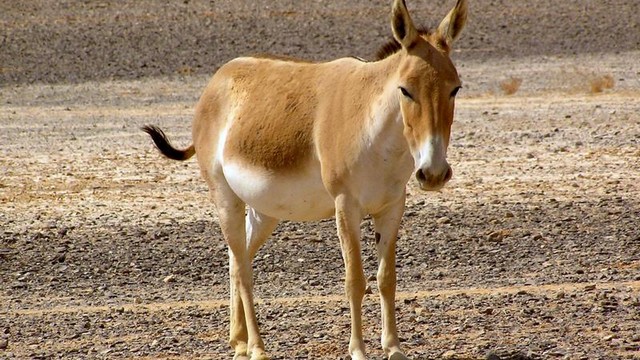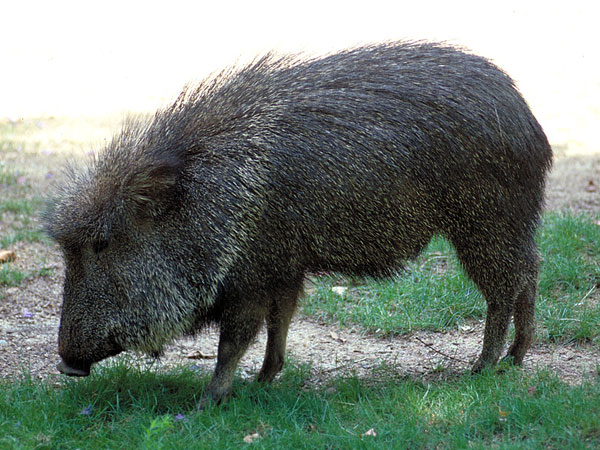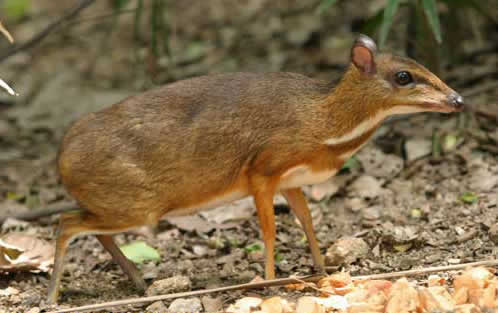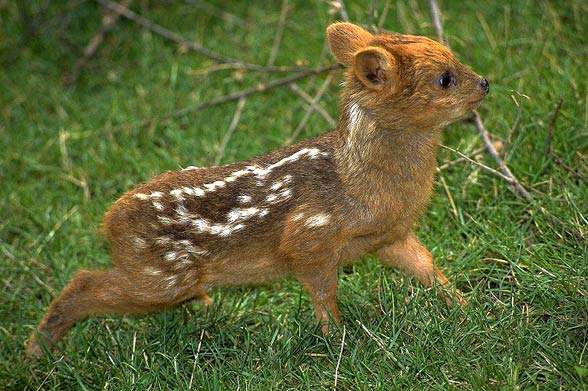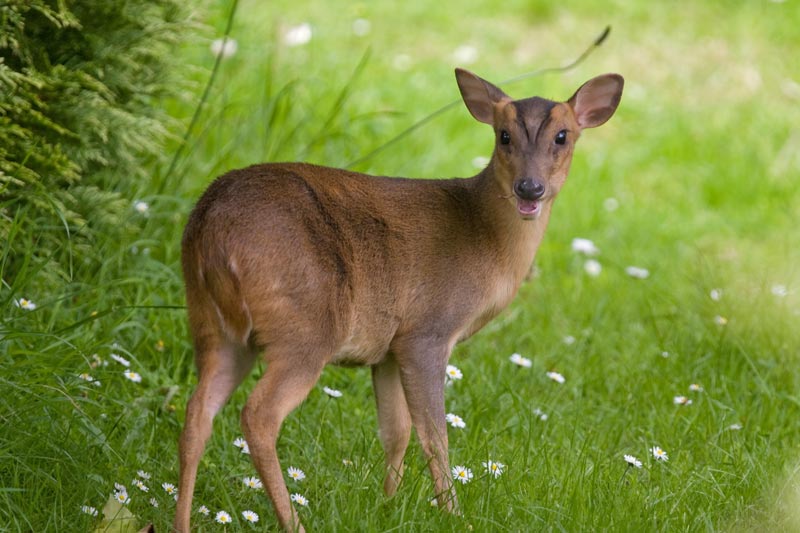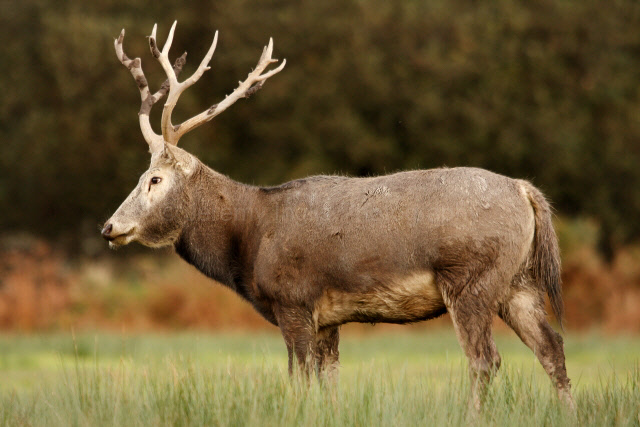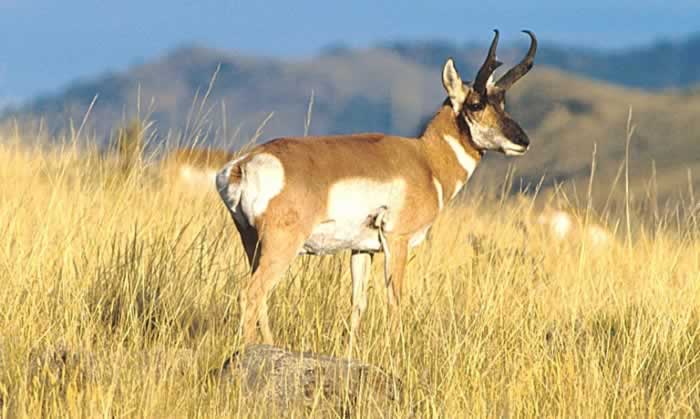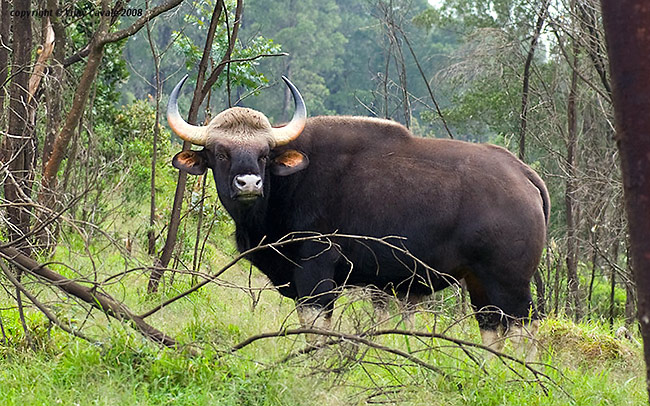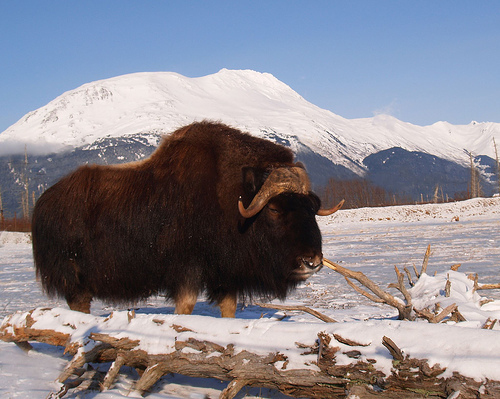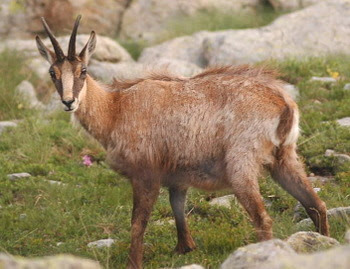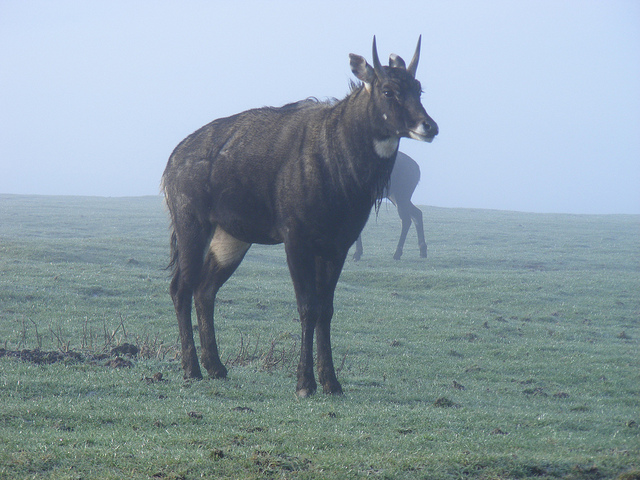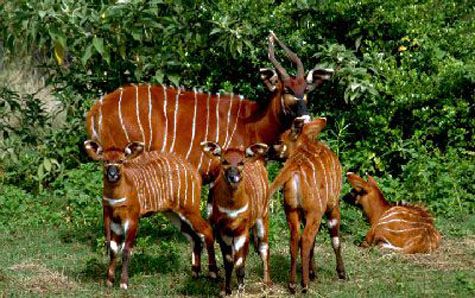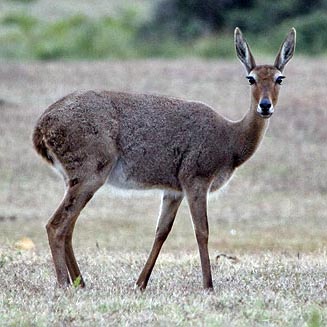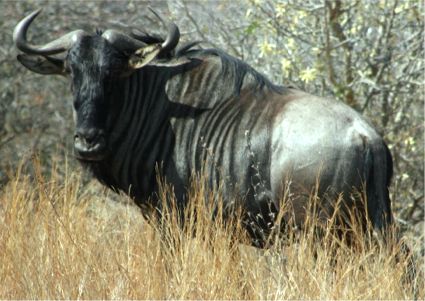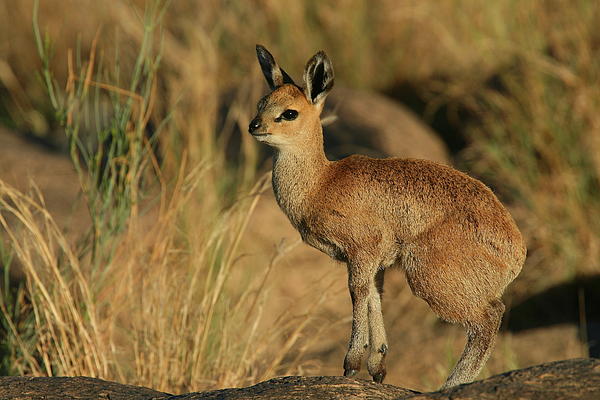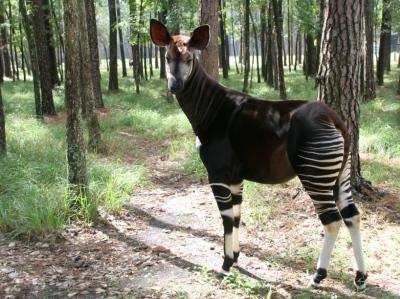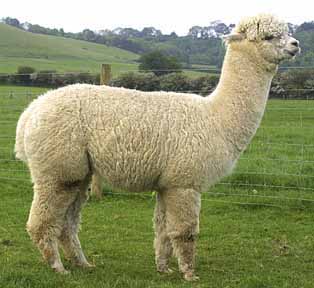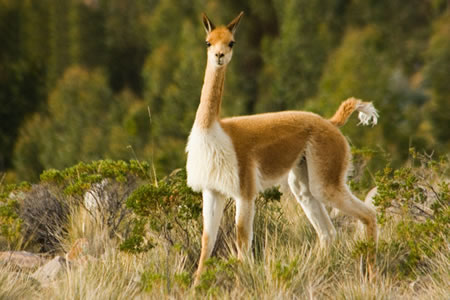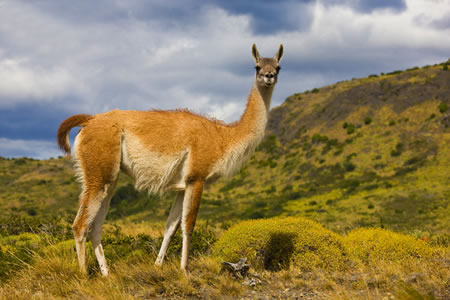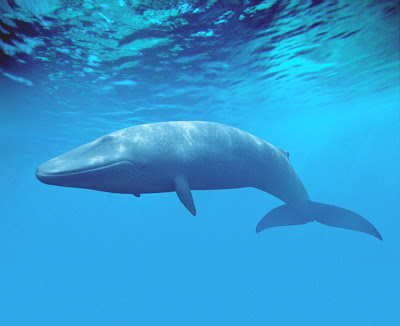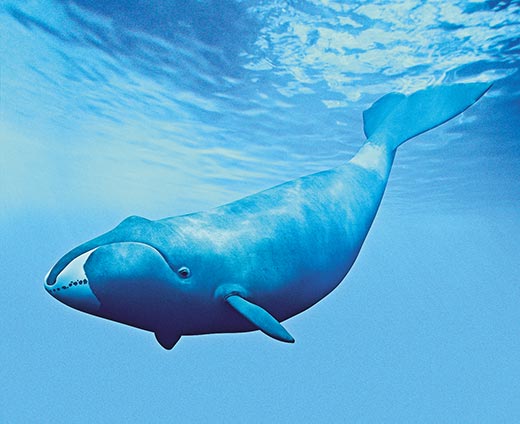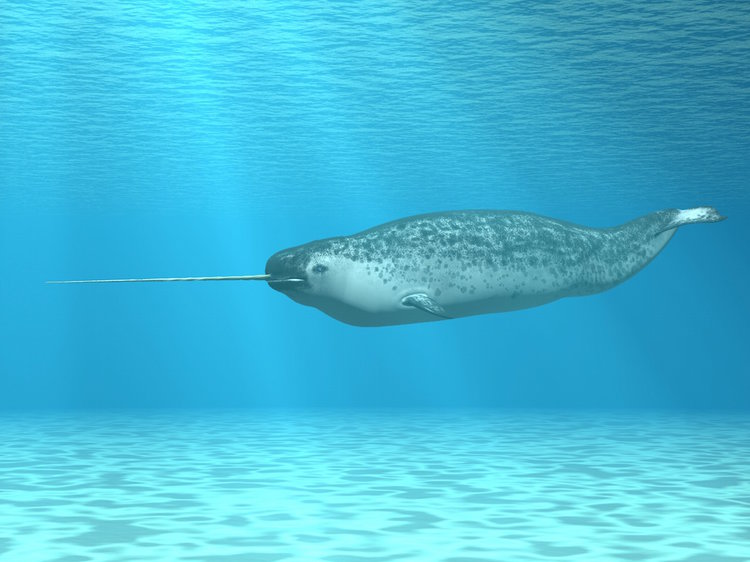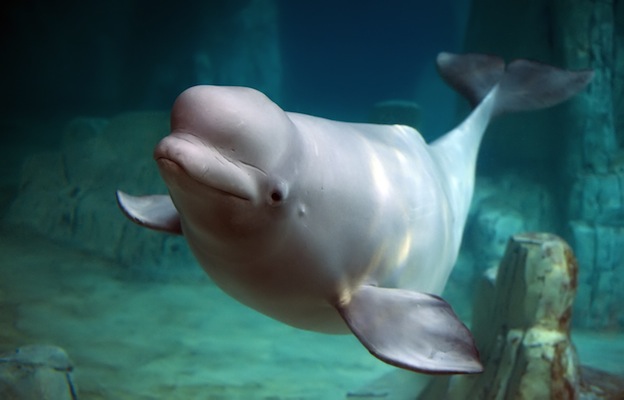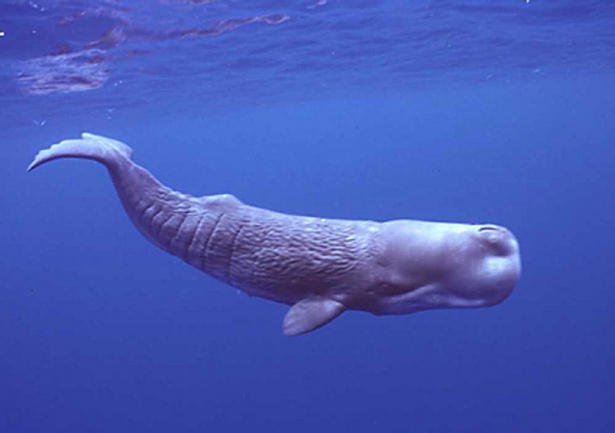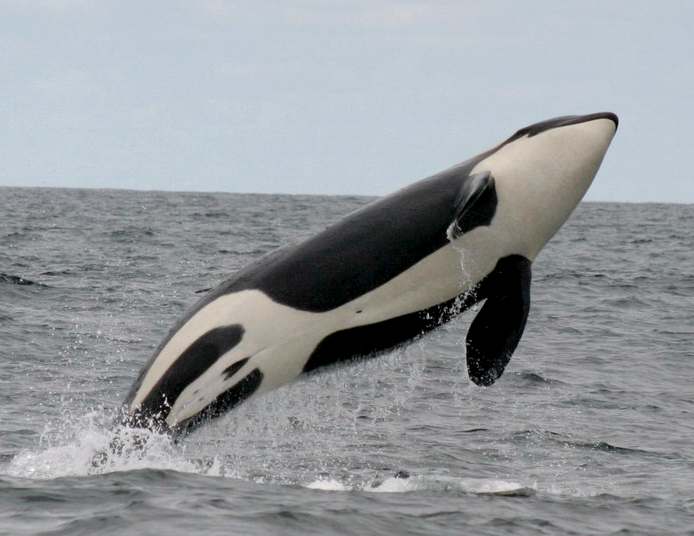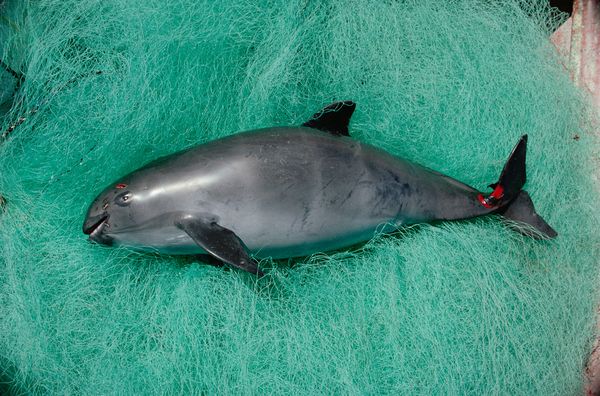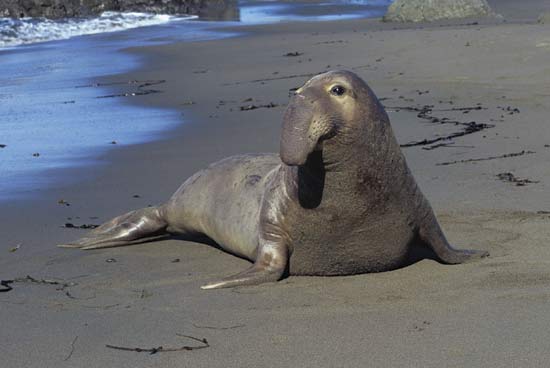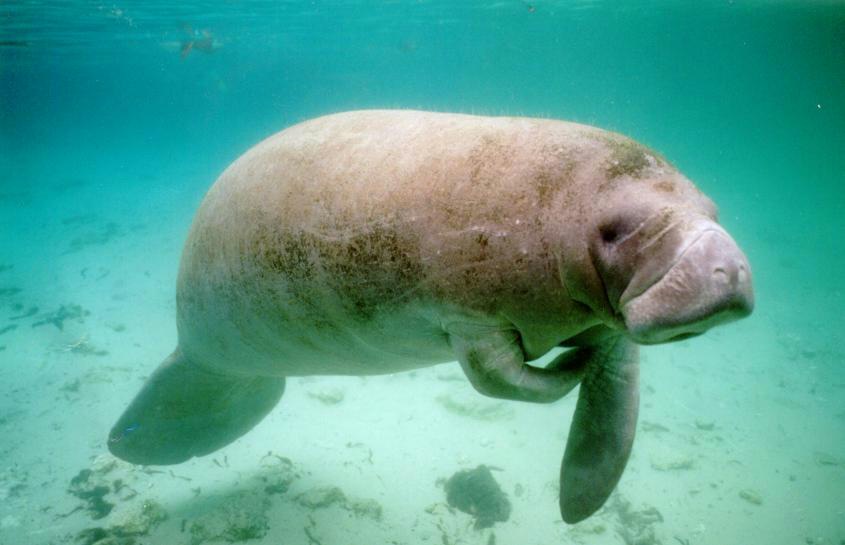Difference between revisions of "Physical World/Mammals - 3"
(Added images) |
(Added images) |
||
| (3 intermediate revisions by the same user not shown) | |||
| Line 104: | Line 104: | ||
Tapirs inhabit jungle and forest regions of South America, Central America, and Southeastern Asia | Tapirs inhabit jungle and forest regions of South America, Central America, and Southeastern Asia | ||
|- | |- | ||
| − | | | + | |[[File:Przewalskis horse.jpg|none|thumb]] |
|'''Przewalski's Horse''' | |'''Przewalski's Horse''' | ||
| Line 112: | Line 112: | ||
Native to the steppes of central Asia, notably Mongolia | Native to the steppes of central Asia, notably Mongolia | ||
| − | |||
The horse is named after the Russian colonel Nikolai Przhevalsky (the name is of Polish origin and "Przewalski" is the Polish spelling), who first described the horse in 1881 | The horse is named after the Russian colonel Nikolai Przhevalsky (the name is of Polish origin and "Przewalski" is the Polish spelling), who first described the horse in 1881 | ||
|- | |- | ||
| − | | | + | |[[File:Onager.jpg|none|thumb]] |
|'''Onager''' | |'''Onager''' | ||
''Equus hemionus'' | ''Equus hemionus'' | ||
| + | |||
Also known as hemione or Asiatic wild ass | Also known as hemione or Asiatic wild ass | ||
| − | |||
Onagers have never been domesticated. They are among the fastest mammals | Onagers have never been domesticated. They are among the fastest mammals | ||
| − | |||
There is a Roman siege engine called an onager | There is a Roman siege engine called an onager | ||
|- | |- | ||
| − | | | + | |[[File:Peccary.jpg|none|thumb]] |
|'''Peccary''' | |'''Peccary''' | ||
family Tayassuidae (New World pigs) | family Tayassuidae (New World pigs) | ||
| + | |||
Also known as skunk pig | Also known as skunk pig | ||
| − | |||
Native to the Americas | Native to the Americas | ||
|- | |- | ||
| − | | | + | |[[File:Chevrotain.jpg|none|thumb]] |
|'''Chevrotain''' | |'''Chevrotain''' | ||
family Tragulidae | family Tragulidae | ||
| + | |||
Also known as mouse-deer | Also known as mouse-deer | ||
| − | |||
Chevrotain is French for "little goat" | Chevrotain is French for "little goat" | ||
| − | |||
Java mouse-deer is world’s smallest hoofed mammal | Java mouse-deer is world’s smallest hoofed mammal | ||
|- | |- | ||
| − | | | + | |[[File:Pudu.jpg|none|thumb]] |
|'''Pudu''' | |'''Pudu''' | ||
| Line 165: | Line 162: | ||
Northern, southern – species of pudu | Northern, southern – species of pudu | ||
| − | |||
Inhabits temperate rainforests in South America | Inhabits temperate rainforests in South America | ||
| − | |||
The world's smallest deer | The world's smallest deer | ||
|- | |- | ||
| − | | | + | |[[File:Muntjac.jpg|none|thumb]] |
|'''Muntjac''' | |'''Muntjac''' | ||
genus ''Muntiacus'' | genus ''Muntiacus'' | ||
| + | |||
Also known as barking deer | Also known as barking deer | ||
| − | |||
Muntjacs are the oldest known deer. The present-day species are native to South Asia | Muntjacs are the oldest known deer. The present-day species are native to South Asia | ||
| − | |||
A large feral population of muntjacs exists in England | A large feral population of muntjacs exists in England | ||
|- | |- | ||
| − | | | + | |[[File:Pere Davids deer.jpg|none|thumb]] |
|'''Père David's deer''' | |'''Père David's deer''' | ||
''Elaphurus davidianus'' | ''Elaphurus davidianus'' | ||
| + | |||
Native to the subtropics of China | Native to the subtropics of China | ||
| − | + | First made known to Western science in the 19th century, by Father Armand David, a French missionary working in China. The current world population, now found in zoos around the world, stems from a herd at Woburn Abbey nurtured by the 11th Duke of Bedford | |
| − | First made known to Western science in the 19th century, by Father Armand David, a French missionary working in China. The current world population, now found in zoos around the world, stems from a herd Woburn Abbey nurtured by the 11th Duke of Bedford | ||
|- | |- | ||
| − | | | + | |[[File:Pronghorn.jpg|none|thumb]] |
|'''Pronghorn''' | |'''Pronghorn''' | ||
''Antilocapra americana'' | ''Antilocapra americana'' | ||
| + | |||
Though not an antelope, it is often known colloquially in North America as the prong buck or pronghorn antelope | Though not an antelope, it is often known colloquially in North America as the prong buck or pronghorn antelope | ||
| − | |||
Fastest land mammal in the Western Hemisphere | Fastest land mammal in the Western Hemisphere | ||
|- | |- | ||
| − | | | + | |[[File:Gaur.jpg|none|thumb]] |
|'''Gaur''' | |'''Gaur''' | ||
| Line 216: | Line 210: | ||
Also known as Indian bison | Also known as Indian bison | ||
| − | |||
Largest extant bovine, native to South Asia and Southeast Asia | Largest extant bovine, native to South Asia and Southeast Asia | ||
|- | |- | ||
| − | | | + | |[[File:Muskox.jpg|none|thumb]] |
|'''Muskox''' | |'''Muskox''' | ||
''Ovibos moschatus'' | ''Ovibos moschatus'' | ||
| + | |||
Arctic mammal of the family Bovidae noted for its thick coat and for the strong odour emitted during the seasonal rut by males, from which its name derives | Arctic mammal of the family Bovidae noted for its thick coat and for the strong odour emitted during the seasonal rut by males, from which its name derives | ||
|- | |- | ||
| − | | | + | |[[File:Chamois.jpg|none|thumb]] |
|'''Chamois''' | |'''Chamois''' | ||
| Line 236: | Line 230: | ||
A goat-antelope species native to mountains in Europe. The chamois has also been introduced to the South Island of New Zealand | A goat-antelope species native to mountains in Europe. The chamois has also been introduced to the South Island of New Zealand | ||
| − | |||
Chamois leather is traditionally made from the hide of the chamois | Chamois leather is traditionally made from the hide of the chamois | ||
|- | |- | ||
| − | | | + | |[[File:Nilgai.jpg|none|thumb]] |
|'''Nilgai''' | |'''Nilgai''' | ||
| − | ''Boselaphus tragocamelus'' | + | ''Boselaphus tragocamelus'' |
| + | |||
Largest Asian antelope | Largest Asian antelope | ||
| − | |||
Found throughout most of India | Found throughout most of India | ||
| − | |||
Mature male appears ox-like and is also known as the blue bull | Mature male appears ox-like and is also known as the blue bull | ||
|- | |- | ||
| − | | | + | |[[File:Bongo.jpg|none|thumb]] |
|'''Bongo''' | |'''Bongo''' | ||
''Tragelaphus eurycerus'' | ''Tragelaphus eurycerus'' | ||
| + | |||
Large African forest antelope | Large African forest antelope | ||
| − | |||
Bongos are characterised by a striking reddish-brown coat, black and white markings, white-yellow stripes and long slightly spiraled horns | Bongos are characterised by a striking reddish-brown coat, black and white markings, white-yellow stripes and long slightly spiraled horns | ||
|- | |- | ||
| − | | | + | |[[File:Rhebok.jpg|none|thumb]] |
|'''Grey rhebok''' | |'''Grey rhebok''' | ||
''Pelea capreolus'' | ''Pelea capreolus'' | ||
| + | |||
Antelope endemic to Southern Africa | Antelope endemic to Southern Africa | ||
| − | |||
The Afrikaans/Dutch spelling of the species, reebok, lends its name to the sportswear manufacturing company | The Afrikaans/Dutch spelling of the species, reebok, lends its name to the sportswear manufacturing company | ||
|- | |- | ||
| − | | | + | |[[File:Wildebeest.jpg|none|thumb]] |
|'''Wildebeest''' | |'''Wildebeest''' | ||
| Line 284: | Line 276: | ||
Two species, both native to Africa: the black wildebeest, or white-tailed gnu; and the blue wildebeest, or brindled gnu | Two species, both native to Africa: the black wildebeest, or white-tailed gnu; and the blue wildebeest, or brindled gnu | ||
| − | |||
Blue wildebeest are known for their long distance migrations | Blue wildebeest are known for their long distance migrations | ||
|- | |- | ||
| − | | | + | |[[File:Klipspringer.jpg|none|thumb]] |
|'''Klipspringer''' | |'''Klipspringer''' | ||
| Line 296: | Line 287: | ||
Small species of African antelope | Small species of African antelope | ||
| − | |||
Klipspringer means "rock jumper" in Afrikaans | Klipspringer means "rock jumper" in Afrikaans | ||
| − | |||
They are around 1.5 m tall and can jump 10 times their own body height | They are around 1.5 m tall and can jump 10 times their own body height | ||
|- | |- | ||
| − | | | + | |[[File:Giraffe.jpg|none|thumb]] |
|'''Giraffe''' | |'''Giraffe''' | ||
''Giraffa camelopardalis'' | ''Giraffa camelopardalis'' | ||
| + | |||
Tallest living terrestrial animal and the largest ruminant | Tallest living terrestrial animal and the largest ruminant | ||
| − | |||
Heart of a giraffe has to generate around double the normal blood pressure for a large mammal in order to maintain blood flow to the brain against gravity. Giraffe has seven neck (cervical) vertebrae, the same as a human | Heart of a giraffe has to generate around double the normal blood pressure for a large mammal in order to maintain blood flow to the brain against gravity. Giraffe has seven neck (cervical) vertebrae, the same as a human | ||
|- | |- | ||
| − | | | + | |[[File:Okapi.jpg|none|thumb]] |
|'''Okapi''' | |'''Okapi''' | ||
''Okapia johnstoni'' | ''Okapia johnstoni'' | ||
| + | |||
The okapi and the giraffe are the only living members of the family Giraffidae | The okapi and the giraffe are the only living members of the family Giraffidae | ||
| − | |||
Named in recognition of the British Governor of Uganda, Sir Harry Johnston, who first acquired an okapi specimen for science | Named in recognition of the British Governor of Uganda, Sir Harry Johnston, who first acquired an okapi specimen for science | ||
|- | |- | ||
| − | | | + | |[[File:Alpaca.jpg|none|thumb]] |
|'''Alpaca''' | |'''Alpaca''' | ||
''Vicugna pacos'' | ''Vicugna pacos'' | ||
| + | |||
A domesticated species of South American camelid. It resembles a small llama in appearance | A domesticated species of South American camelid. It resembles a small llama in appearance | ||
| − | |||
Alpaca fleece is a lustrous and silky natural fibre | Alpaca fleece is a lustrous and silky natural fibre | ||
|- | |- | ||
| − | | | + | |[[File:Vicuna.jpg|none|thumb]] |
|'''Vicuna''' | |'''Vicuna''' | ||
''Vicugna vicugna'' | ''Vicugna vicugna'' | ||
| + | |||
Believed to be the wild ancestor of domesticated alpacas | Believed to be the wild ancestor of domesticated alpacas | ||
| − | |||
Vicunas produce small amounts of extremely fine wool, which is very expensive | Vicunas produce small amounts of extremely fine wool, which is very expensive | ||
| − | |||
Vicuna is smaller than the guanaco | Vicuna is smaller than the guanaco | ||
|- | |- | ||
| − | | | + | |[[File:Guanaco.jpg|none|thumb]] |
|'''Guanaco''' | |'''Guanaco''' | ||
''Lama guanicoe'' | ''Lama guanicoe'' | ||
| + | |||
Native to the arid, mountainous regions of South America | Native to the arid, mountainous regions of South America | ||
| − | |||
The guanaco's soft wool is valued second only to that of the vicuna | The guanaco's soft wool is valued second only to that of the vicuna | ||
|- | |- | ||
| − | | | + | |[[File:Blue whale.jpg|none|thumb]] |
|'''Blue whale''' | |'''Blue whale''' | ||
''Balaenoptera musculus'' | ''Balaenoptera musculus'' | ||
| + | |||
At 30 metres in length and 180 tonnes in weight, it is the largest extant animal and is the heaviest known to have existed | At 30 metres in length and 180 tonnes in weight, it is the largest extant animal and is the heaviest known to have existed | ||
| − | |||
Herman Melville called the blue whale "sulphur-bottom" in ''Moby-Dick'' | Herman Melville called the blue whale "sulphur-bottom" in ''Moby-Dick'' | ||
|- | |- | ||
| − | | | + | |[[File:Bowhead whale.jpg|none|thumb]] |
|'''Bowhead whale''' | |'''Bowhead whale''' | ||
''Balaena mysticetus'' | ''Balaena mysticetus'' | ||
| + | |||
Also known as the Greenland right whale or Arctic whale | Also known as the Greenland right whale or Arctic whale | ||
| − | |||
Does not have a dorsal fin. Named after its arching lower jaw. Its baleen is the longest of any whale at 3 metres | Does not have a dorsal fin. Named after its arching lower jaw. Its baleen is the longest of any whale at 3 metres | ||
|- | |- | ||
| − | | | + | |[[File:Narwhal.jpg|none|thumb]] |
|'''Narwhal''' | |'''Narwhal''' | ||
''Monodon monoceros'' | ''Monodon monoceros'' | ||
| + | |||
Toothed whale that possesses a large "tusk" from a protruding canine tooth. Narwhal tusks were believed to be the horns from the legendary unicorn | Toothed whale that possesses a large "tusk" from a protruding canine tooth. Narwhal tusks were believed to be the horns from the legendary unicorn | ||
| − | |||
It lives year-round in the Arctic waters | It lives year-round in the Arctic waters | ||
|- | |- | ||
| − | | | + | |[[File:Beluga whale.jpg|none|thumb]] |
|'''Beluga whale''' | |'''Beluga whale''' | ||
''Delphinapterus leucas'' | ''Delphinapterus leucas'' | ||
| + | |||
Also known as white whale, or sea canary due to its high-pitched twitter | Also known as white whale, or sea canary due to its high-pitched twitter | ||
| − | |||
Lives in the Arctic. It is entirely white as an adult | Lives in the Arctic. It is entirely white as an adult | ||
|- | |- | ||
| − | | | + | |[[File:Sperm whale.jpg|none|thumb]] |
|'''Sperm whale''' | |'''Sperm whale''' | ||
''Physeter macrocephalus'' | ''Physeter macrocephalus'' | ||
| + | |||
Also known as cachelot | Also known as cachelot | ||
| − | |||
The largest of the toothed whales and the largest toothed predator. It has the largest brain of any animal | The largest of the toothed whales and the largest toothed predator. It has the largest brain of any animal | ||
| Line 418: | Line 406: | ||
The head of the whale contains a liquid wax called spermaceti, from which the whale derives its name | The head of the whale contains a liquid wax called spermaceti, from which the whale derives its name | ||
|- | |- | ||
| − | | | + | |[[File:Killer whale.jpg|none|thumb]] |
|'''Killer whale''' | |'''Killer whale''' | ||
''Orcinus orca'' | ''Orcinus orca'' | ||
| + | |||
Also known as orca, blackfish, or grampus | Also known as orca, blackfish, or grampus | ||
| − | |||
A toothed whale belonging to the oceanic dolphin family, of which it is the largest member | A toothed whale belonging to the oceanic dolphin family, of which it is the largest member | ||
|- | |- | ||
| − | | | + | |[[File:Vaquita.jpg|none|thumb]] |
| − | |''' | + | |'''Vaquita''' |
''Phocoena sinus'' | ''Phocoena sinus'' | ||
| + | |||
A rare species of porpoise endemic to the Gulf of California. Smallest cetacean | A rare species of porpoise endemic to the Gulf of California. Smallest cetacean | ||
| − | |||
Porpoises are small toothed whales that are closely related to oceanic dolphins | Porpoises are small toothed whales that are closely related to oceanic dolphins | ||
| Line 442: | Line 430: | ||
|- | |- | ||
| − | | | + | |[[File:Elephant seal.jpg|none|thumb]] |
|'''Elephant seal''' | |'''Elephant seal''' | ||
genus ''Mirounga'' | genus ''Mirounga'' | ||
| + | |||
Two species – northern and southern | Two species – northern and southern | ||
| − | |||
Elephant seals take their name from the large proboscis of the adult male, which resembles an elephant's trunk. Southern elephant seal bulls typically reach a length of 4.9 metres and a weight of 3,000 kg | Elephant seals take their name from the large proboscis of the adult male, which resembles an elephant's trunk. Southern elephant seal bulls typically reach a length of 4.9 metres and a weight of 3,000 kg | ||
|- | |- | ||
| − | | | + | |[[File:Dugong.jpg|none|thumb]] |
|'''Dugong''' | |'''Dugong''' | ||
''Dugong dugon'' | ''Dugong dugon'' | ||
| + | |||
Dugong, together with the manatees, is one of four living species of the order Sirenia | Dugong, together with the manatees, is one of four living species of the order Sirenia | ||
| − | |||
It has a fusiform body (tapered at both the head and the tail). Dugong is distinguished from the manatees by its fluked, dolphin-like tail, but also possesses a unique skull and teeth | It has a fusiform body (tapered at both the head and the tail). Dugong is distinguished from the manatees by its fluked, dolphin-like tail, but also possesses a unique skull and teeth | ||
|- | |- | ||
| − | | | + | |[[File:Manatee.jpg|none|thumb]] |
|'''Manatee''' | |'''Manatee''' | ||
genus ''Trichecus'' | genus ''Trichecus'' | ||
| + | |||
Also known as sea cows | Also known as sea cows | ||
| − | |||
Three species – Amazonian, West Indian, and West African | Three species – Amazonian, West Indian, and West African | ||
| − | |||
Manatees have a paddle-shaped tail | Manatees have a paddle-shaped tail | ||
|} | |} | ||
Latest revision as of 15:36, 5 July 2021
| Caracal
The most distinctive feature of the caracal is the long black tufts on the back of the ears | |
| Bobcat
It has distinctive black bars on its forelegs and a black-tipped, stubby tail, from which it derives its name | |
| Ocelot
Distributed extensively within South America Similar in appearance to a domestic cat. Its fur resembles that of a clouded leopard or jaguar | |
| Margay
Similar to the larger ocelot in appearance, although the head is a little shorter, the eyes larger, and the tail and legs longer | |
| Serval
A medium-sized African wild cat native to sub-Saharan Africa Servals have the longest legs of any cat, relative to their body size | |
| Aardwolf
Second animal in the dictionary, after aardvark | |
| Fossa
The largest mammalian carnivore on the island of Madagascar
| |
| Meerkat
Meerkats forage in a group with one "sentry" on guard watching for predators while the others search for food and "Compare The Market” | |
| Tapir
Tapirs inhabit jungle and forest regions of South America, Central America, and Southeastern Asia | |
| Przewalski's Horse
The horse is named after the Russian colonel Nikolai Przhevalsky (the name is of Polish origin and "Przewalski" is the Polish spelling), who first described the horse in 1881 | |
| Onager
Onagers have never been domesticated. They are among the fastest mammals There is a Roman siege engine called an onager | |
| Peccary
Also known as skunk pig Native to the Americas | |
| Chevrotain
Also known as mouse-deer Chevrotain is French for "little goat" Java mouse-deer is world’s smallest hoofed mammal | |
| Pudu
Inhabits temperate rainforests in South America The world's smallest deer | |
| Muntjac
Muntjacs are the oldest known deer. The present-day species are native to South Asia A large feral population of muntjacs exists in England | |
| Père David's deer
First made known to Western science in the 19th century, by Father Armand David, a French missionary working in China. The current world population, now found in zoos around the world, stems from a herd at Woburn Abbey nurtured by the 11th Duke of Bedford | |
| Pronghorn
Fastest land mammal in the Western Hemisphere | |
| Gaur
Largest extant bovine, native to South Asia and Southeast Asia | |
| Muskox
| |
| Chamois
Chamois leather is traditionally made from the hide of the chamois | |
| Nilgai
Found throughout most of India Mature male appears ox-like and is also known as the blue bull | |
| Bongo
Bongos are characterised by a striking reddish-brown coat, black and white markings, white-yellow stripes and long slightly spiraled horns | |
| Grey rhebok
The Afrikaans/Dutch spelling of the species, reebok, lends its name to the sportswear manufacturing company | |
| Wildebeest
Blue wildebeest are known for their long distance migrations | |
| Klipspringer
Klipspringer means "rock jumper" in Afrikaans They are around 1.5 m tall and can jump 10 times their own body height | |
| Giraffe
Heart of a giraffe has to generate around double the normal blood pressure for a large mammal in order to maintain blood flow to the brain against gravity. Giraffe has seven neck (cervical) vertebrae, the same as a human | |
| Okapi
Named in recognition of the British Governor of Uganda, Sir Harry Johnston, who first acquired an okapi specimen for science | |
| Alpaca
Alpaca fleece is a lustrous and silky natural fibre | |
| Vicuna
Vicunas produce small amounts of extremely fine wool, which is very expensive Vicuna is smaller than the guanaco | |
| Guanaco
The guanaco's soft wool is valued second only to that of the vicuna | |
| Blue whale
Herman Melville called the blue whale "sulphur-bottom" in Moby-Dick | |
| Bowhead whale
Does not have a dorsal fin. Named after its arching lower jaw. Its baleen is the longest of any whale at 3 metres | |
| Narwhal
It lives year-round in the Arctic waters | |
| Beluga whale
Lives in the Arctic. It is entirely white as an adult | |
| Sperm whale
The largest of the toothed whales and the largest toothed predator. It has the largest brain of any animal The head of the whale contains a liquid wax called spermaceti, from which the whale derives its name | |
| Killer whale
A toothed whale belonging to the oceanic dolphin family, of which it is the largest member | |
| Vaquita
Porpoises are small toothed whales that are closely related to oceanic dolphins
| |
| Elephant seal
Elephant seals take their name from the large proboscis of the adult male, which resembles an elephant's trunk. Southern elephant seal bulls typically reach a length of 4.9 metres and a weight of 3,000 kg | |
| Dugong
It has a fusiform body (tapered at both the head and the tail). Dugong is distinguished from the manatees by its fluked, dolphin-like tail, but also possesses a unique skull and teeth | |
| Manatee
Three species – Amazonian, West Indian, and West African Manatees have a paddle-shaped tail |



